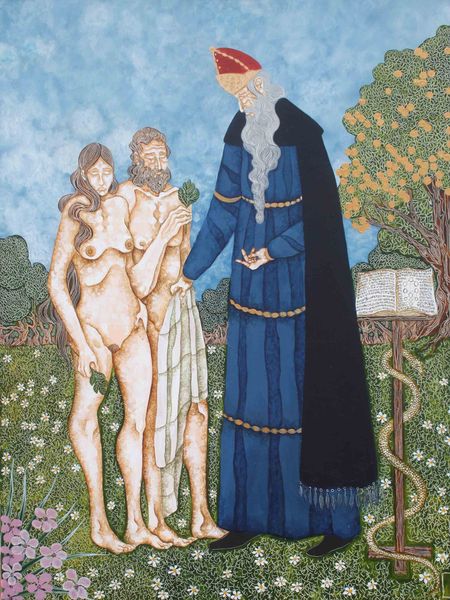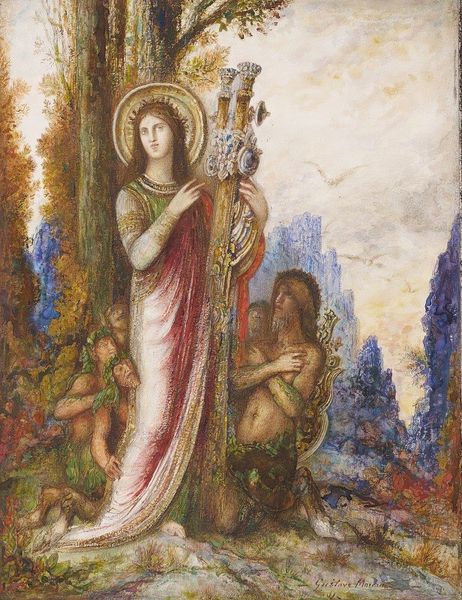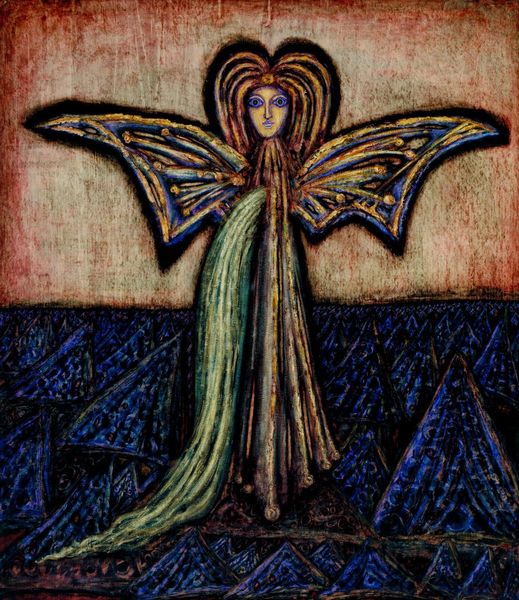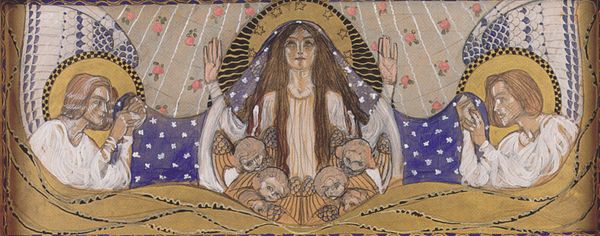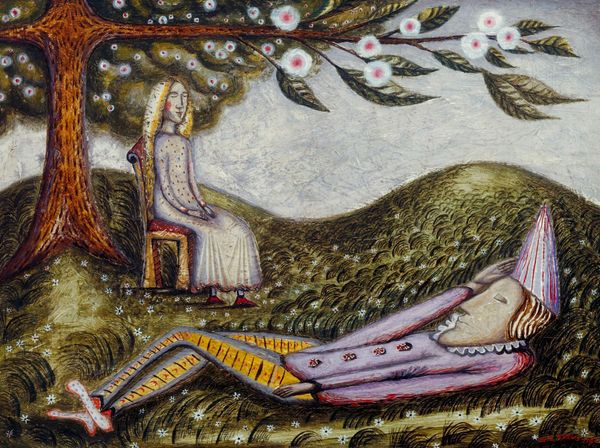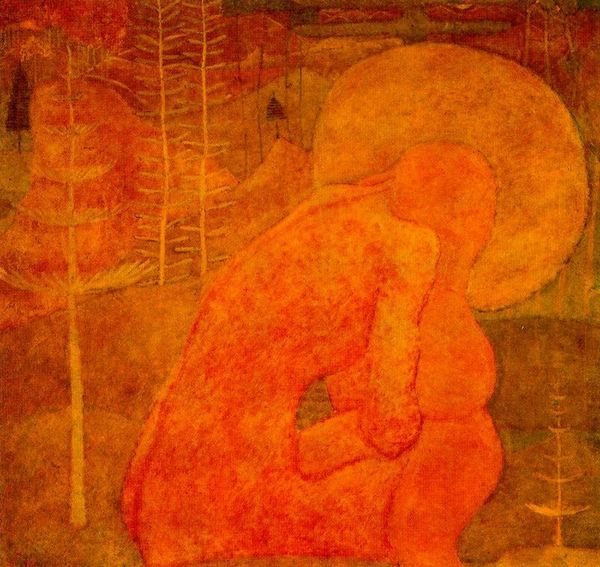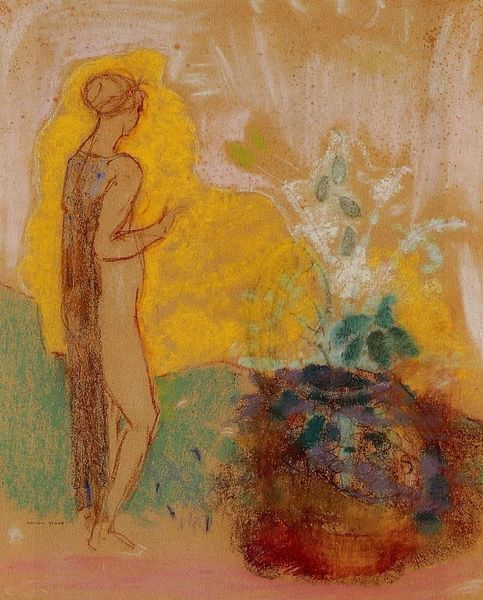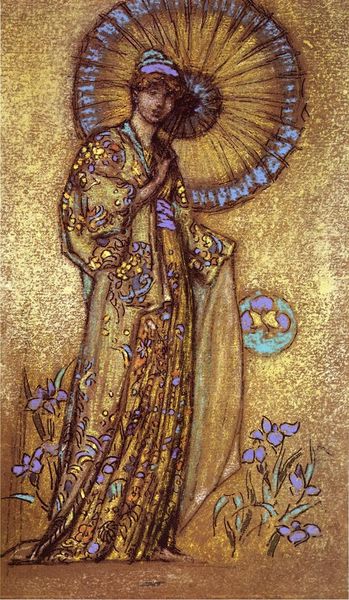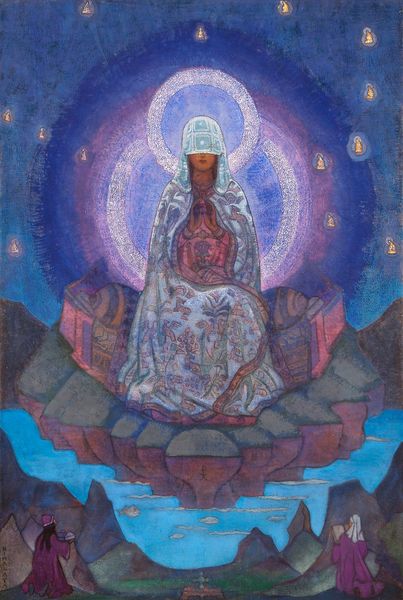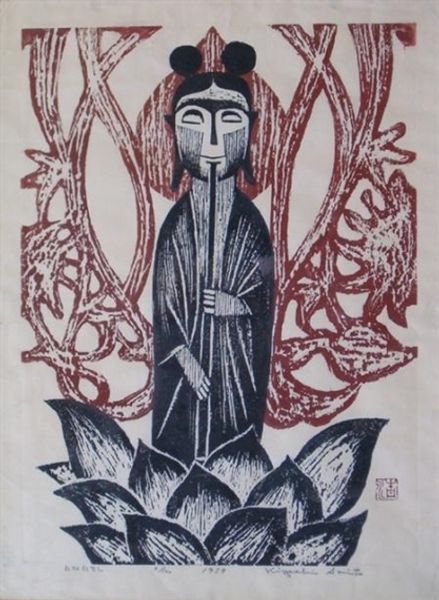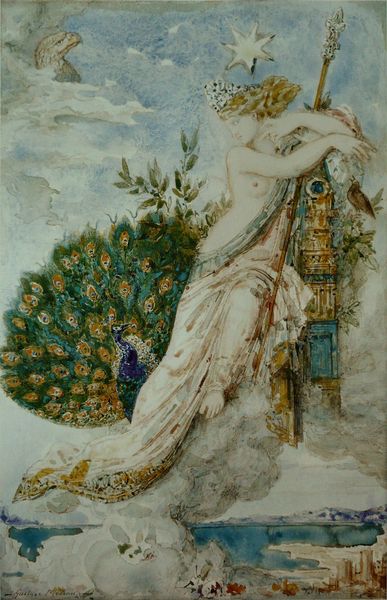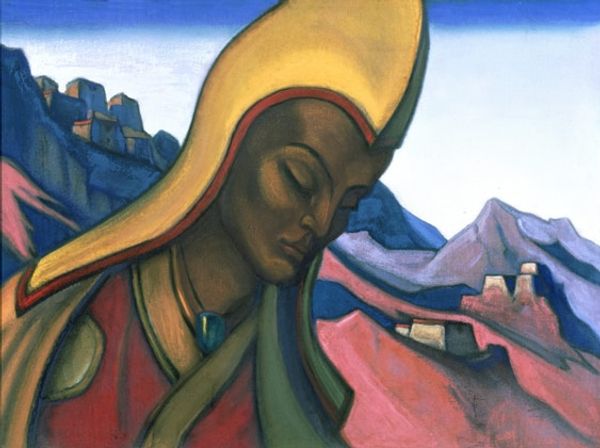
Dimensions: support: 600 x 490 mm
Copyright: © Tate | CC-BY-NC-ND 4.0 DEED, Photo: Tate
Curator: Cecil Collins' work, "The Artist's Wife Seated in a Tree," presents a figure in quiet repose. What strikes you initially? Editor: There's a strange serenity. The woman blends into the tree—are they one? She looks like a dryad in her arboreal throne. Curator: Collins often used archetypal symbols. The tree itself—a classic symbol of life—and the mirror she holds are fascinating. Is she reflecting or observing? Editor: The mirror could be a portal, a glimpse into another world. And a bird—traditionally seen as a messenger—perches on her arm. Curator: The composition, with its simplified forms and muted tones, draws attention to the interplay of line and shape. It's a study in visual harmony. Editor: Perhaps Collins captures the hidden kinship between humanity and nature, a gentle reminder that we are all interconnected. Curator: Indeed, the painting's formal elements and symbolic language converge to evoke a sense of timelessness. Editor: A captivating piece that invites contemplation of inner worlds mirrored in the outer landscape.
Comments
tate 7 months ago
⋮
http://www.tate.org.uk/art/artworks/collins-the-artists-wife-seated-in-a-tree-t07737
Join the conversation
Join millions of artists and users on Artera today and experience the ultimate creative platform.
tate 7 months ago
⋮
Collins met his wife, Elizabeth Ramsden, when he was studying at the Royal College of Art. They married in 1931 and for the next sixty years she became the most important influence on his life and art. She often appears in his work as the angel or ‘anima’, representing the inner self. In this unusual image Collins shows his wife sitting in a tree, holding in her hand a trophy symbolising eternity. The bird nesting beside her represents freedom, and possibly indicates the artist’s awareness of the emerging powers and rights of women in society. Gallery label, February 2004
